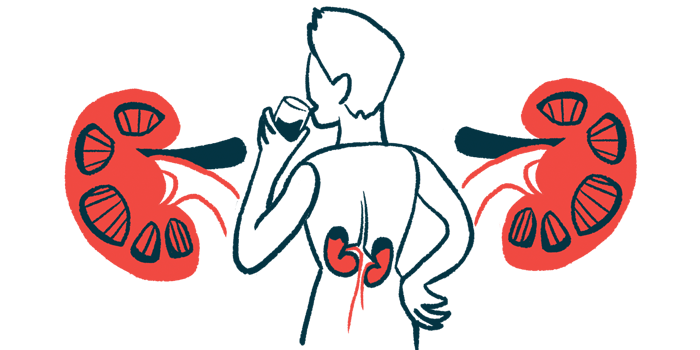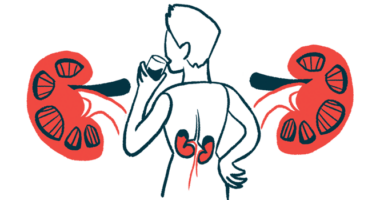Kidney function at diagnosis linked to outcomes in pediatric AAV
Poor initial function indicates worse function after a year, study finds

Most children with ANCA-associated vasculitis (AAV) and kidney involvement at diagnosis will exhibit inactive kidney disease after one year, and more than two in five will show evidence of permanent kidney damage, according to data from an international registry study.
A glomerular filtration rate (eGFR) — a standard measure of kidney function — below 38 ml/min/1.73 m2 at diagnosis was found to be predictive of moderate to severe kidney dysfunction after one year, while higher eGFRs predicted stable or improved kidney function.
The findings “highlight the high rate of significant [kidney] disease in pediatric AAV and how renal function at diagnosis is a strong predictor of renal function at 12-months,” the researchers wrote. “The identification of a cutpoint threshold eGFR value has potential as a predictive clinical tool that is easy to use and understand for both clinicians and patients.”
The study, “Evaluating renal disease in pediatric-onset anti-neutrophil cytoplasmic antibody-associated vasculitis: disease course, outcomes, and predictors of outcome,” was published in Arthritis & Rheumatology.
AAV is a group of autoimmune diseases characterized by inflammation and damage to small blood vessels that most commonly affects the kidneys and lungs.
Pinpointing those needing aggressive treatment
“Pediatric-onset AAV is more likely to be severe and have major organ dysfunction, including high rates of significantly reduced renal function at diagnosis,” the researchers wrote. It is therefore crucial to distinguish between pediatric AAV patients “who may need aggressive treatment” from those who can be given “less toxic therapy due to mild renal disease” or irreversible kidney damage that won’t respond to additional treatment, they wrote.
The international team of researchers evaluated the course of kidney disease and potential predictors of kidney outcomes in 145 children with AAV and kidney involvement at diagnosis. Kidney involvement was defined as either biopsy-confirmed glomerulonephritis or dependence on dialysis to replace kidney function.
All children were enrolled in A Registry for Children with Vasculitis at 27 sites around the world, mostly located in the U.S., Canada, and the U.K.
Their mean age was 13.8, and 68% were girls.
In terms of AAV types, ranulomatosis with polyangiitis was the most common diagnosis (78% of the children), followed by microscopic polyangiitis (22%).
Ninety-two percent of the children had highly active kidney disease at diagnosis, as reflected by a score of 10 to 12 (the maximum possible score) in the kidney subcomponent of the pediatric vasculitis activity score, a validated measure of disease activity.
Based on the eGFR, 29% of the children had normal kidney function, in 14% function was severely reduced, and 17% had kidney failure Twenty-five percent were on dialysis.
Seventy percent received glucocorticoids together with cyclophosphamide as treatment.
A total of 143 patients were followed for one year, and 87 for two years after diagnosis. Follow-up data showed that one year after diagnosis, 83% had inactive kidney disease, a proportion that increased to 98% after two years.
However, despite attaining inactive kidney disease, 42% had signs of permanent kidney damage after one year, and 35% after two years. These signs included reduced to poor kidney function (31%), kidney failure (21%), and high blood pressure (15%).
Given that data from adult AAV patients suggest that the most common kidney damage signs after one year were reduced kidney function alone, kidney damage “is potentially a greater burden in children who have long lives ahead of them compared to adults who are usually diagnosed at over 50 years of age,” the researchers wrote.
The proportion of children with mildly reduced kidney function increased from 9% at diagnosis to 37% at two years, while the proportion of children with either moderately-to-severely reduced kidney function or kidney failure decreased from 54% to 24%.
In addition, eGFR-based kidney function category at time of diagnosis was a significant predictor of kidney function after one year.
Moderately to severely reduced kidney function at diagnosis was significantly associated with a fourfold higher risk of kidney function worsening at one year, severely reduced kidney function to an eight times increased risk, and kidney failure to a 26 times higher risk.
Further analyses indicated that a cutoff eGFR value of 38 ml/min/1.73 m2 at diagnosis was able to discriminate between children with moderate to severe kidney dysfunction after one year and those without, with an accuracy of 84%.
Sixty-one percent of the children with an eGFR below the cutoff value at diagnosis continued to have at least moderate to severe kidney dysfunction after one year, while 95% of those with an eGFR above cutoff showed stable or improved kidney function.
“Validation of such a threshold could have significant clinical implications by informing prognosis and improving our ability to counsel patients at diagnosis,” the researchers wrote. “Early identification of patients at highest risk for poor renal outcome may enable earlier intervention with renoprotective measures such as controlling [high blood pressure], treating [high protein levels in urine], managing weight, and minimizing other potential insults to the kidney,” they concluded.







